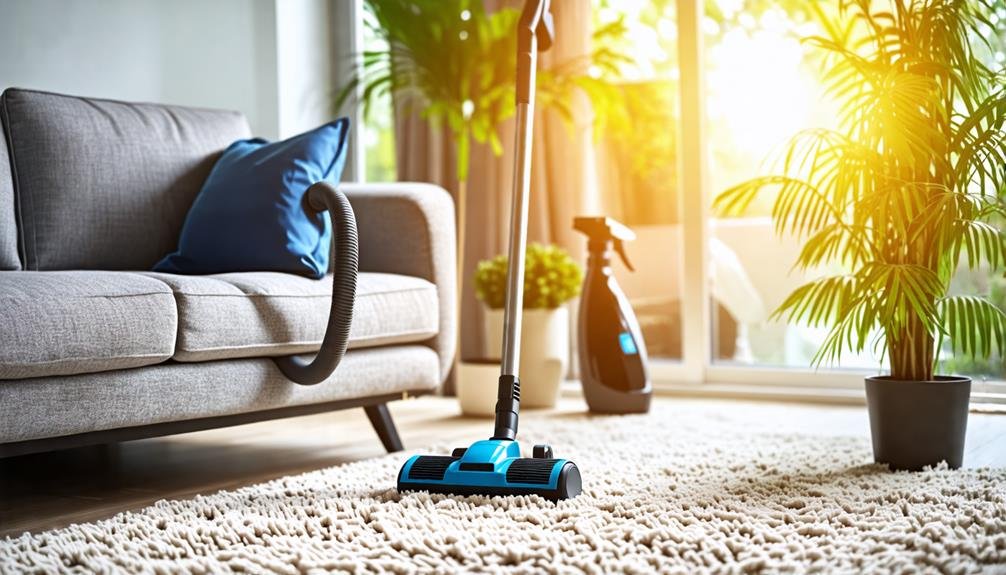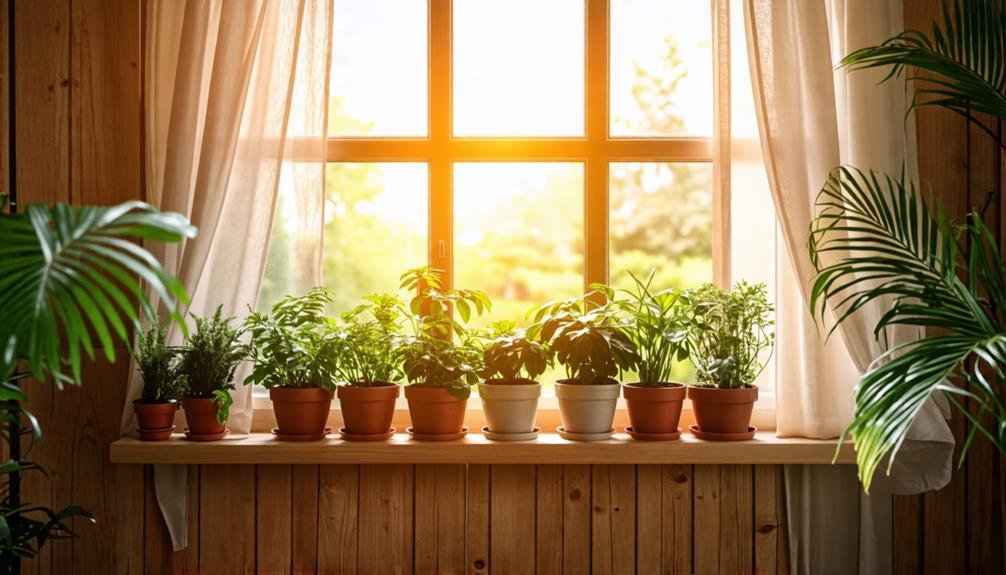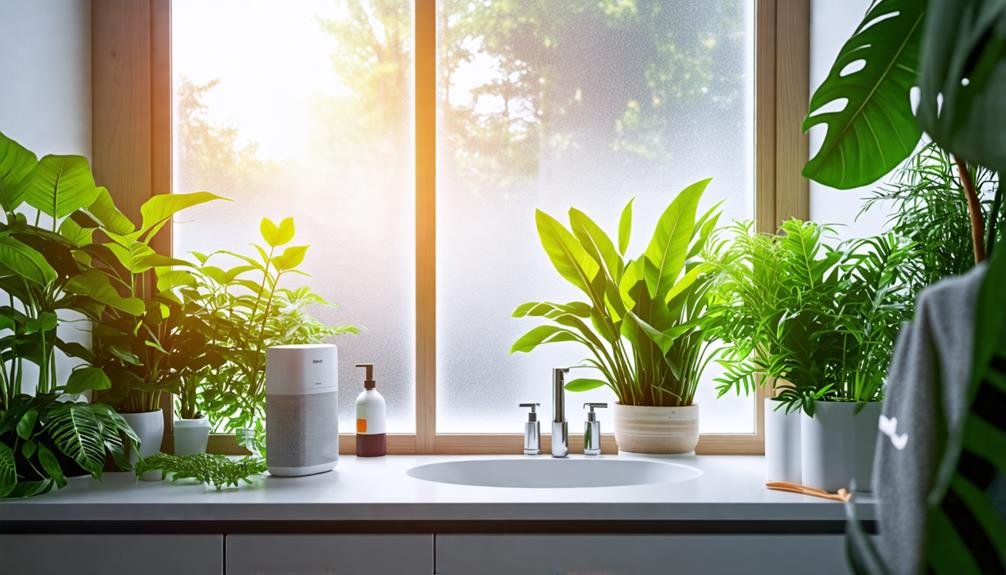Formaldehyde is a colorless gas and a volatile organic compound (VOC) commonly found in carpets due to adhesives and synthetic fibers used in their production. It significantly impacts indoor air quality, especially during installation and under heat or moisture exposure. Sources of formaldehyde in carpets include off-gassing from new installations and absorption from the environment by older carpets. Short-term exposure may cause headaches and irritation, while long-term exposure can lead to serious respiratory issues. To mitigate these risks, maintain proper ventilation, perform regular cleaning, and consider low-VOC carpets for a healthier environment. More insights on managing formaldehyde can be further investigated.
What Is Formaldehyde?
Formaldehyde is a colorless gas known for its strong odor. It falls under the category of volatile organic compounds (VOCs) and is often found in household items and construction materials, including carpets. This compound is typically utilized in making adhesives and resins, leading to its presence in the fibers and backing of carpets.
Carpet formaldehyde can significantly affect indoor air quality, as it can be released into the atmosphere, especially during the first installation period or when carpets are subjected to heat or moisture.
For homeowners, understanding carpet safety is essential for maintaining a healthy living space. Extended exposure to formaldehyde may lead to health concerns, including respiratory issues and irritation of the eyes and skin. Therefore, it is important to identify formaldehyde sources in carpets and take steps to mitigate its impact.
Sources of Formaldehyde in Carpets
Formaldehyde in carpets originates from several sources, primarily linked to manufacturing processes and the materials used. New carpets often release formaldehyde through off-gassing, a phenomenon associated with adhesives and synthetic fibers. Moreover, existing carpets can absorb pollutants from the environment, including household sources such as cleaning products and allergens, further contributing to indoor air quality concerns.
Carpet Manufacturing Processes
Carpet manufacturing processes commonly utilize chemical adhesives and cushioning materials, which can release formaldehyde and other volatile organic compounds (VOCs) into indoor environments. These substances bond carpet fibers to backing and enhance cushioning for improved comfort and durability. However, this benefit can lead to the introduction of harmful substances in homes.
During production, synthetic fibers like nylon and polyester are often treated with formaldehyde-based resins to boost performance and longevity. While the integration of these chemicals can be beneficial, it raises concerns about indoor air quality. As carpets age, they may continue to emit VOCs, creating a cycle of potential exposure.
Additionally, manufacturing conditions, such as temperature and humidity, influence the release rate of these compounds. Awareness of these processes is crucial for consumers prioritizing healthy living environments. By selecting carpets made with low-VOC adhesives and materials, individuals can reduce the risks associated with formaldehyde exposure in their homes. Brands like Mohawk Industries and Shaw Industries offer alternatives that align with these health-conscious choices.
Off-Gassing From Materials
Off-gassing from various materials in carpets, including adhesives and synthetic fibers, poses a significant risk of indoor air pollution that can harm health. These materials often release volatile organic compounds (VOCs), with formaldehyde being particularly concerning. Newly manufactured carpets, such as those from brands like Mohawk and Shaw, typically emit higher levels of formaldehyde due to the adhesives used in production and the chemical finishes applied to synthetic fibers.
As carpets age, they may continue to off-gas, especially if they have absorbed pollutants from their surroundings. This ongoing release can deteriorate indoor air quality, leading to symptoms like headaches, dizziness, and respiratory issues. Additionally, environmental factors such as temperature and humidity can worsen the off-gassing, increasing exposure over time.
To reduce these risks, individuals should take proactive steps, such as allowing new carpets to off-gas in well-ventilated areas before installation. Regular cleaning and maintenance can also help diminish accumulated VOCs, fostering a healthier living environment. By understanding the sources of formaldehyde in carpets, individuals can make informed choices that enhance freedom from harmful indoor air pollutants.
Household Sources and Pollutants
Household products and environmental aspects contribute to the buildup of formaldehyde and other volatile organic compounds (VOCs) in rugs, negatively impacting indoor air quality. Recognizing these contributors is vital for maintaining a healthy home.
Common household items that release formaldehyde and VOCs include:
- New Rugs: Often made with chemical adhesives that emit VOCs during off-gassing.
- Furniture: Composite wood products, like particleboard and fiberboard, frequently utilize formaldehyde-based adhesives.
- Cleaning Agents: Numerous conventional cleaners and air fresheners, such as those from brands like Febreze and Lysol, contain VOCs that can settle into carpets.
- Humidity Levels: Elevated moisture can encourage mold development, which also releases VOCs and may accumulate within rugs.
Awareness of these sources enables homeowners to take proactive steps to reduce pollutants. This includes enhancing ventilation, opting for low-VOC products, and committing to routine carpet upkeep. By implementing these strategies, individuals can reclaim their living spaces from harmful chemicals, promoting a healthier indoor atmosphere that supports well-being and alleviates health issues related to formaldehyde exposure.
Health Risks of Formaldehyde Exposure

Exposure to formaldehyde, a common chemical in carpets like those from Mohawk and Shaw Industries, poses serious health risks. Short-term exposure can cause symptoms such as headaches, dizziness, and irritation of the eyes, nose, and throat. These discomforts can hinder daily routines, making home life less pleasant.
Long-term exposure to formaldehyde is more alarming. It can lead to severe health issues, including respiratory problems and possible damage to vital organs. Formaldehyde is a volatile organic compound (VOC) released by carpets due to adhesives and treatments used in production. As residents move around, this compound can build up in indoor air, raising the risk of inhalation. This situation is especially concerning for sensitive groups, including children and those with pre-existing health concerns, who may be more vulnerable to these harmful effects.
Preventing VOCs in Your Home
Mitigating health risks linked to formaldehyde involves proactive strategies to prevent the buildup of volatile organic compounds (VOCs) in your residence. By reducing these harmful emissions, you can cultivate a healthier living environment free from indoor air pollutants. Consider the following measures:
- Enhance Airflow: Open windows and doors regularly to improve ventilation and allow fresh air to mix with and dilute indoor contaminants.
- Off-Gas Flooring: Allow new carpets, such as those from Shaw Floors, to off-gas outdoors for several days before laying them down, reducing the immediate release of VOCs.
- Invest in Filtration Systems: Use air purifiers, like those from Dyson, equipped with HEPA filters to trap airborne toxins and improve indoor air quality.
- Routine Maintenance: Stick to a consistent cleaning regimen for carpets and rugs, such as using a vacuum with a HEPA filter, to remove dust, allergens, and lingering VOCs.
Implementing these strategies not only protects your well-being but also enhances your home's atmosphere, allowing you to breathe easily and live comfortably. Taking charge of your indoor air quality is an essential step toward a healthier, more liberated lifestyle.
Effective Carpet Maintenance Practices

Proper carpet upkeep practices are essential for maintaining indoor air quality and reducing health risks linked to volatile organic compounds (VOCs) and formaldehyde. Regular vacuuming is a key procedure that aids in eliminating allergens, dirt, and debris trapped in carpet fibers. It is recommended to vacuum carpets at least weekly, or more often in areas with heavy foot traffic, to ensure a healthier living space.
Conducting deep cleaning of carpets once a year can significantly decrease VOC levels and enhance air quality. During the cleaning process, it is vital to choose methods appropriate for the carpet material to prevent any damage. Professional cleaning companies, such as Stanley Steemer or Chem-Dry, provide advanced techniques and equipment that penetrate deeper layers, ensuring an effective clean.
Furthermore, ensuring proper ventilation throughout your residence promotes air circulation, helping to disperse any chemicals emitted from carpets. Employing air purifiers, like those from Dyson or Honeywell, equipped with HEPA filters can further trap harmful particles in the air.
Mitigating Formaldehyde Emissions
Mitigating formaldehyde emissions from carpets requires a combination of effective cleaning techniques and proper ventilation practices. Regular deep cleaning and frequent vacuuming can greatly reduce the accumulation of pollutants, while ensuring adequate airflow in the home helps disperse any remaining emissions. By adopting these strategies, homeowners can create a healthier indoor environment and minimize the risks associated with formaldehyde exposure.
Effective Cleaning Techniques
Regular and thorough cleaning of carpets is crucial for reducing formaldehyde emissions and enhancing indoor air quality. Employing effective cleaning methods can significantly lower the levels of this harmful substance, allowing you to breathe easier in your home. Consider these strategies to maintain a healthier living space:
- Annual Deep Clean: Perform a deep clean once a year to remove embedded pollutants and volatile organic compounds (VOCs).
- Select Suitable Techniques: Utilize cleaning methods that are appropriate for your carpet's material and fiber type, enhancing effectiveness while preventing damage.
- Vacuum Frequently: Vacuum carpets at least twice weekly to eliminate allergens and debris that contribute to indoor air pollution.
- Hire Professional Cleaners: Consider enlisting the help of professional carpet cleaning services, such as those offered by Stanley Steemer, for a comprehensive cleanse, ensuring that even the most stubborn pollutants are effectively removed.
Ventilation Practices
Effective ventilation strategies are essential for minimizing formaldehyde emissions from carpets and enhancing indoor air quality. Adequate airflow within residences aids in dispersing harmful volatile organic compounds (VOCs) released from new carpets. Homeowners should open windows and doors to promote the exchange of indoor and outdoor air, which helps dilute VOC concentrations.
In addition to natural airflow, mechanical systems like exhaust fans and air purifiers significantly enhance indoor air quality. Brands such as Dyson and Honeywell offer HEPA filters that efficiently capture airborne pollutants, including formaldehyde. Maintaining a stable indoor temperature and humidity is also important, as elevated humidity can exacerbate VOC emissions from carpets.
Furthermore, allowing carpets to off-gas outdoors before installation reduces initial exposure to formaldehyde. Regular carpet maintenance, including frequent vacuuming with brands like Shark and Bissell, and deep cleaning, complements effective ventilation by minimizing dust and allergen buildup that can contain VOCs. By adopting these practices, homeowners can foster a healthier living space and mitigate the risks associated with indoor air pollution.



















You must be logged in to post a comment Login